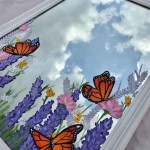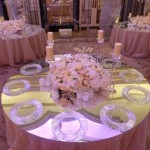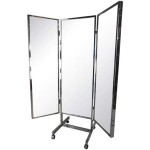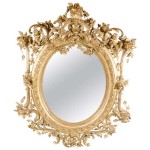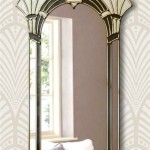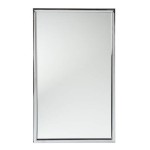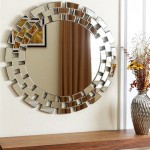Putting a Frame Around a Bathroom Mirror
Framing a bathroom mirror elevates the room's aesthetic, adding a touch of elegance and personalized style. A simple frame can transform a basic, builder-grade mirror into a focal point, enhancing the overall design of the bathroom. This process, while potentially intimidating, is manageable for most DIY enthusiasts with the right tools and a bit of patience.
Choosing the Right Frame
Selecting the appropriate frame involves considering various factors, including the existing bathroom décor, the mirror's size and shape, and the desired overall look. Frame materials range from natural wood and metal to synthetic options like polystyrene and polyurethane. Wood frames offer a classic, warm feel, while metal frames can provide a sleek, modern touch. Synthetic materials are often more budget-friendly and moisture-resistant, a crucial consideration for bathroom environments.
Measuring and Preparing the Mirror
Accurate measurements are crucial for a successful framing project. Using a tape measure, carefully determine the exact dimensions of the mirror's outer edges. These measurements will dictate the size of the frame required. Clean the mirror surface thoroughly with a glass cleaner to ensure proper adhesion of any adhesive used during the framing process. This step is essential for a clean, professional-looking finish.
Selecting the Framing Method
Several methods exist for framing a bathroom mirror. Adhesive-backed frames are a popular choice for their ease of installation, requiring simply peeling off the backing and sticking the frame to the mirror's edge. Another option involves using clips or brackets to secure the frame to the mirror. This method offers greater flexibility for adjustments and future frame replacements. For a more permanent solution, constructing a frame from scratch using wood or other materials and attaching it directly to the wall around the mirror is an option for experienced DIYers.
Gathering Necessary Tools and Materials
Before beginning the framing process, gather all necessary tools and materials. This typically includes a tape measure, level, pencil, safety glasses, adhesive (if using an adhesive-backed frame), a utility knife or saw (for cutting frame materials), and appropriate fasteners (if using clips or brackets). Having everything on hand streamlines the process and prevents interruptions.
Installing the Frame
The installation process varies depending on the chosen framing method. For adhesive-backed frames, carefully align the frame with the mirror's edge and press firmly to secure the adhesive. If using clips or brackets, attach them to the back of the frame and then secure the frame to the mirror according to the manufacturer's instructions. When constructing a frame from scratch, ensure it is securely attached to the wall surrounding the mirror using appropriate fasteners and construction techniques.
Finishing Touches and Considerations
Once the frame is installed, inspect it carefully for any gaps or imperfections. Caulk can be used to fill small gaps and create a seamless transition between the frame and the mirror or wall. Consider adding decorative elements like molding or trim to further enhance the framed mirror's appearance. Ensure adequate ventilation in the bathroom to prevent moisture buildup, which can damage the frame over time. Regular cleaning of the frame and mirror will maintain its appearance and prolong its lifespan.
Addressing Common Challenges
Challenges can arise during the framing process. Dealing with uneven walls or an irregularly shaped mirror might require adjustments to the frame or the use of shims to create a level surface. If using adhesive, ensure it is appropriate for use in bathroom environments and follow the manufacturer's instructions carefully to prevent issues with adhesion. When working with power tools, always prioritize safety and wear appropriate protective gear.
Maintaining the Framed Mirror
Maintaining the framed mirror involves regular cleaning with a gentle glass cleaner and a soft cloth. Avoid abrasive cleaners that can scratch the mirror or damage the frame's finish. Inspect the frame periodically for any signs of damage or wear and tear, addressing any issues promptly to prevent further deterioration. Proper ventilation in the bathroom is essential to minimize moisture exposure, which can affect the frame's longevity.

How To Frame Out That Builder Basic Bathroom Mirror For 20 Or Less

How To Frame A Mirror

Mirror Frame Diy How To Update A Basic Bathroom Our Faux Farmhouse

Diy Stick On Mirror Frame Sawdust Sisters

Diy Bathroom Mirror Frame For Under 10 O Hayley Blog

How To Install A Mirrorchic Bathroom Mirror Frame Momhomeguide Com

Diy Bathroom Mirror Frame With Molding The Happier Homemaker

Easy Diy Tutorial Adding Trim Around A Giant Mirror For Ers

Mirror Frame Diy How To Update A Basic Bathroom Our Faux Farmhouse

The Kids Bathroom Mirror Gets Framed House Of Hepworths
